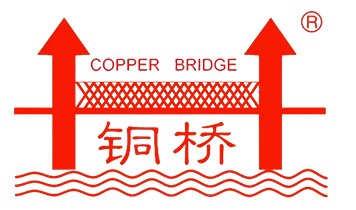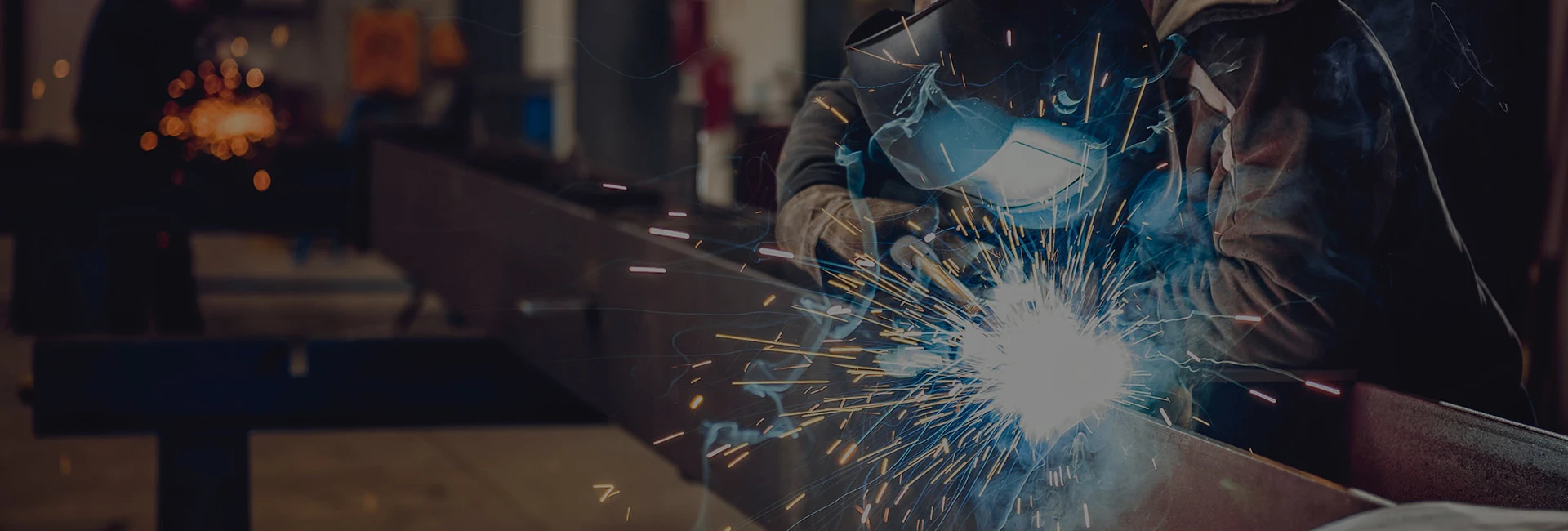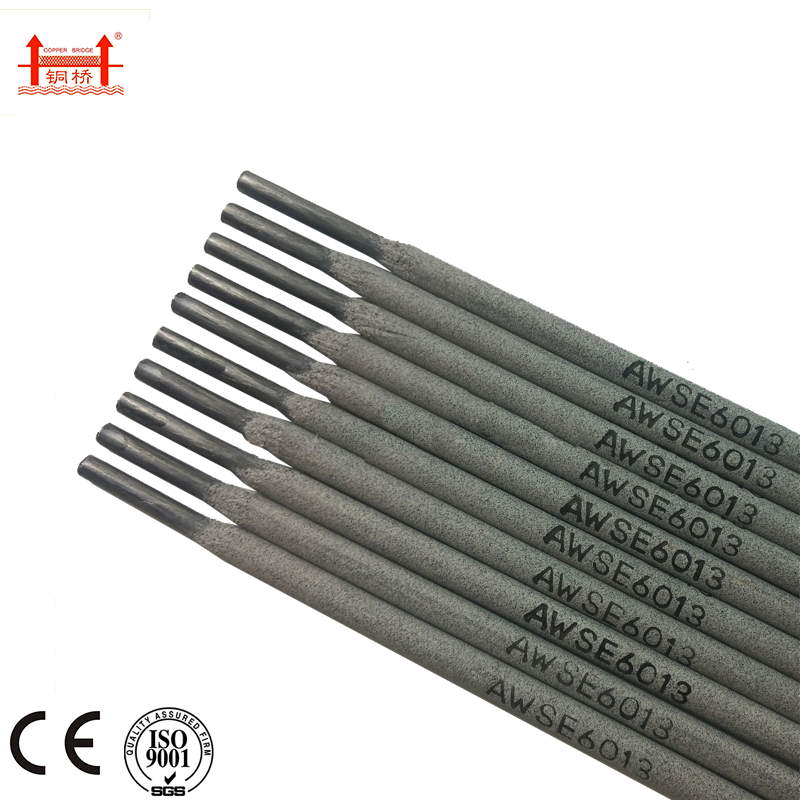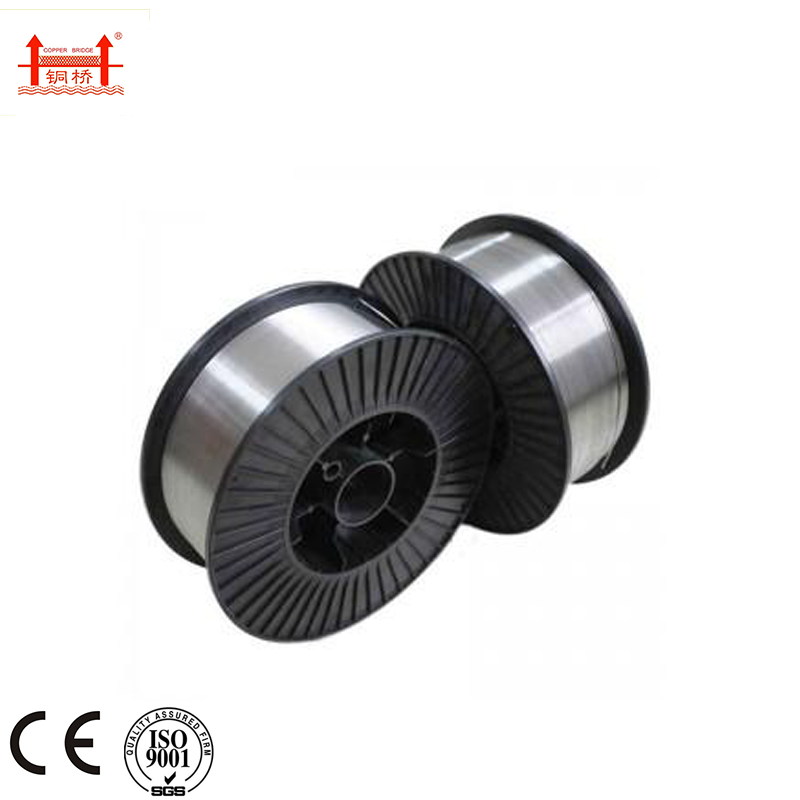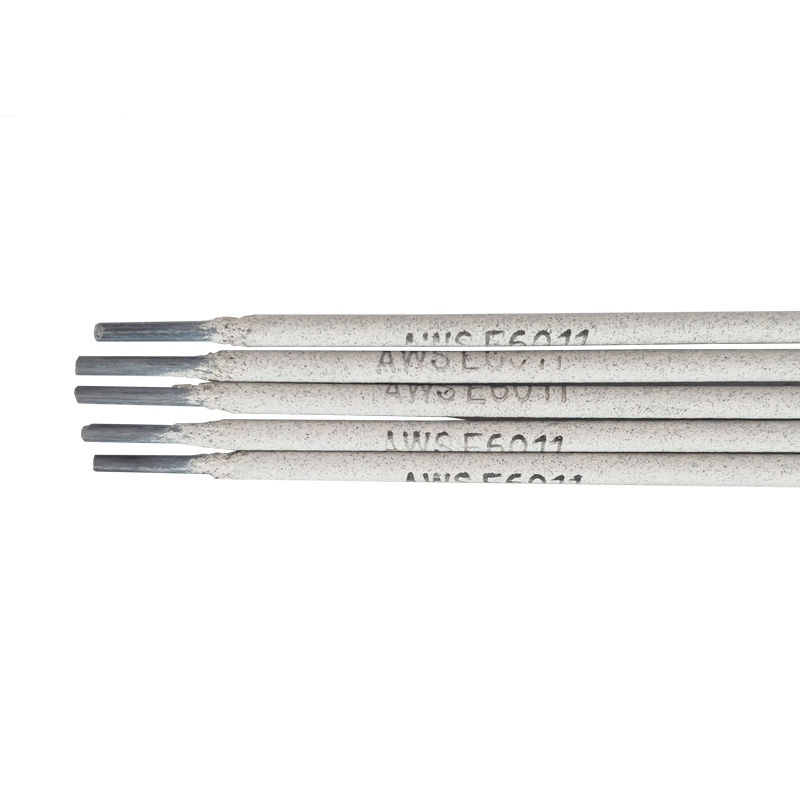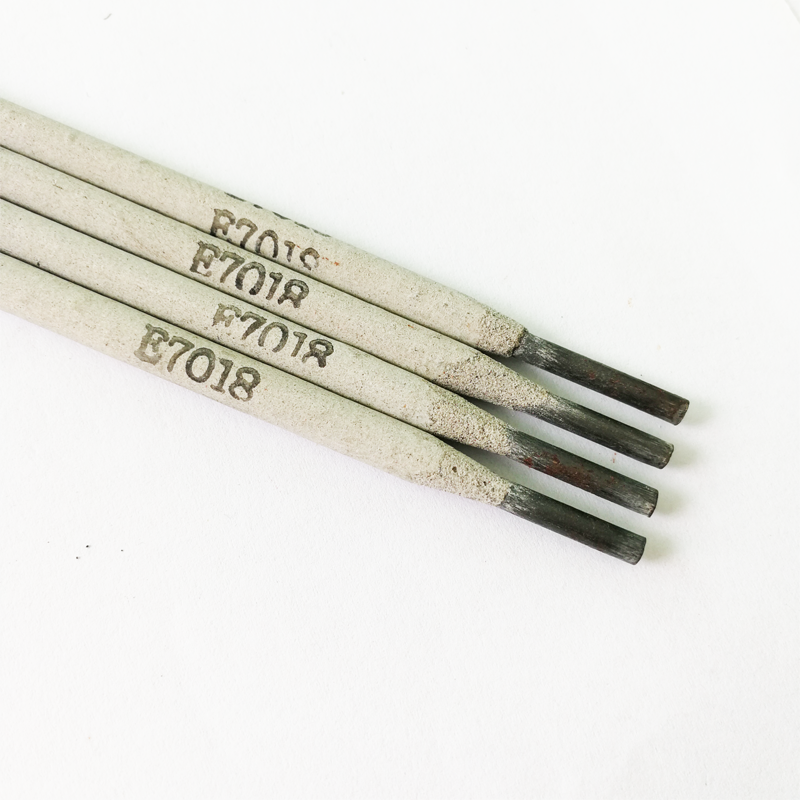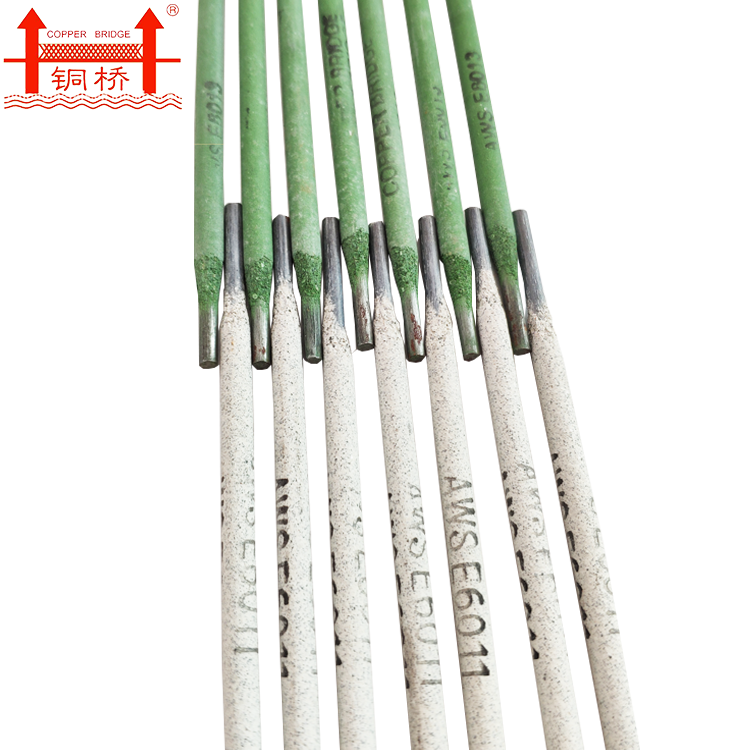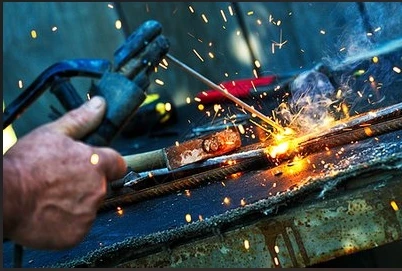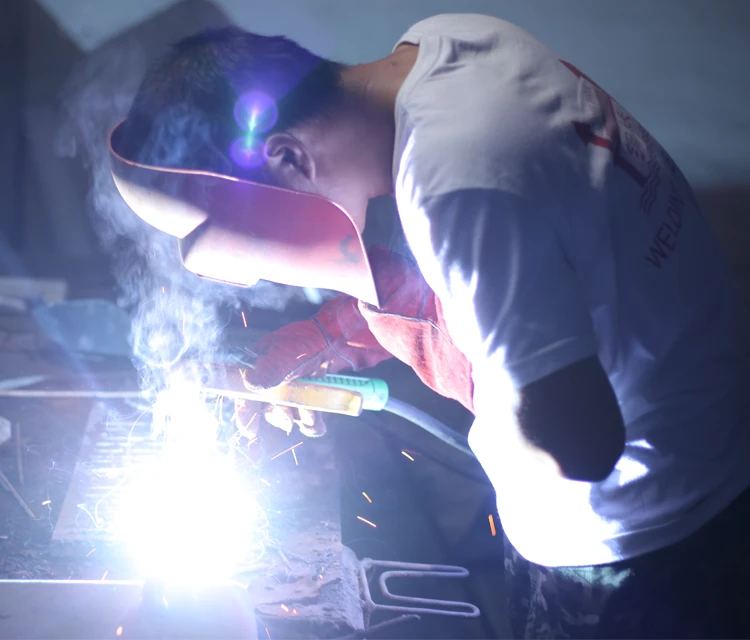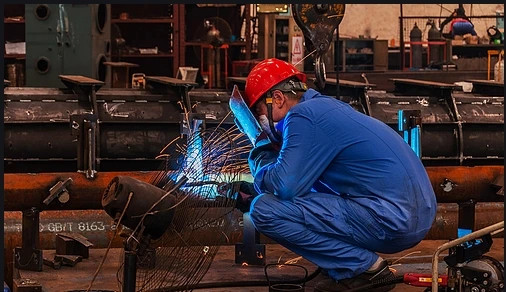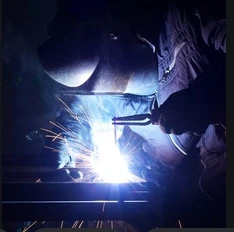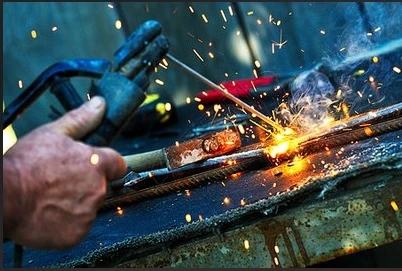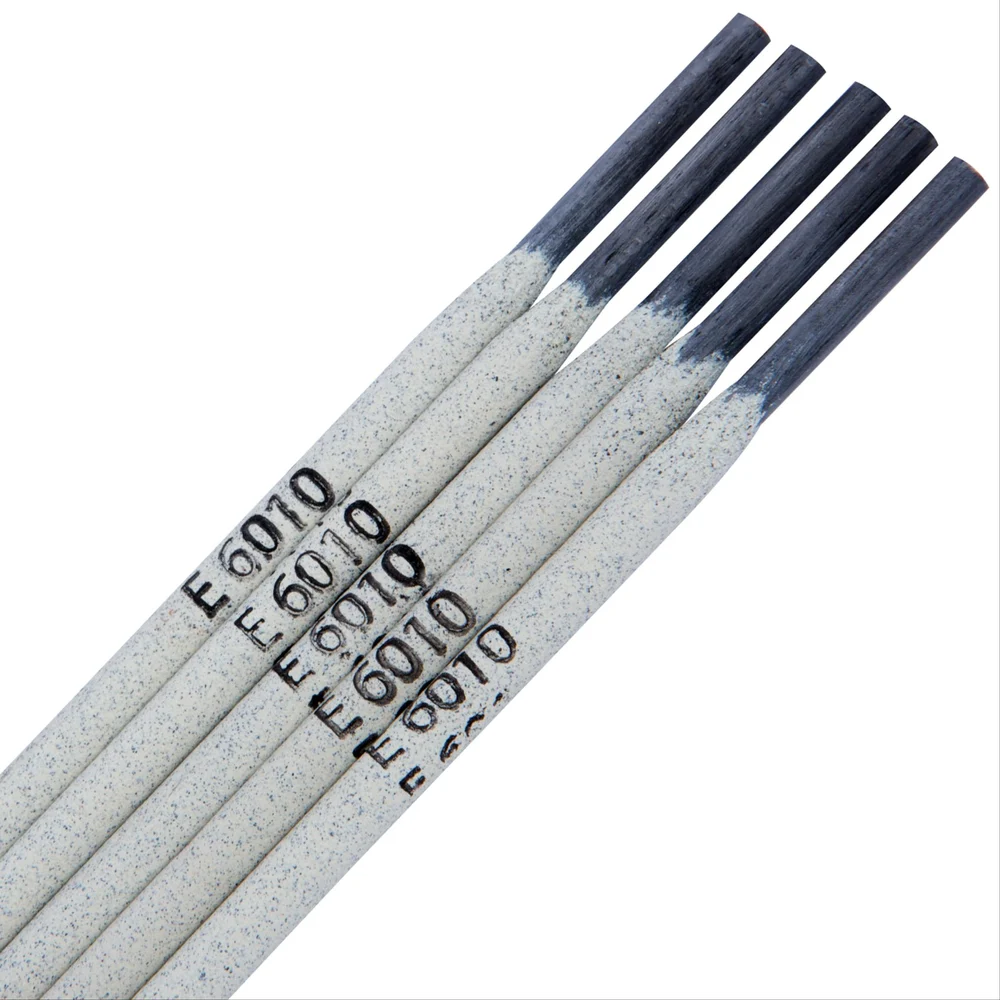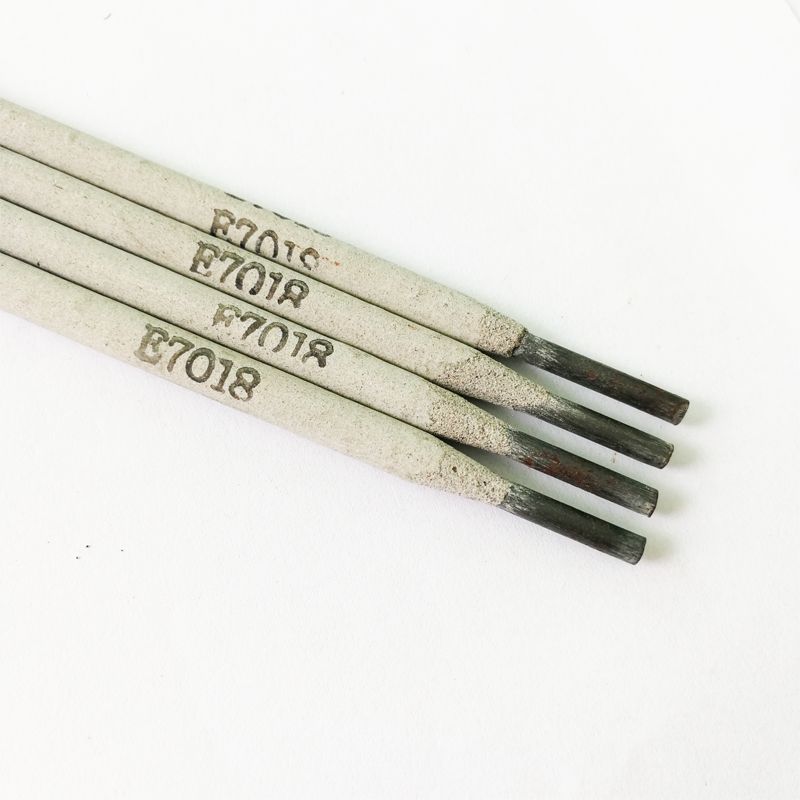Premium AWS E309 & E309L-15 Welding Rods for Stainless Steel
Aug . 26, 2025 06:20
Introduction to Stainless Steel Welding with aws e309 Electrodes
In the demanding landscape of industrial fabrication and repair, the selection of appropriate welding consumables is paramount for ensuring structural integrity, longevity, and operational efficiency. Stainless steel, renowned for its excellent corrosion resistance and mechanical properties, requires specialized welding electrodes that can match its intrinsic characteristics and deliver superior performance under various service conditions. Among these, the aws e309 electrode stands out as a critical solution for a broad spectrum of applications, particularly in joining dissimilar metals and overlaying mild or low-alloy steels.
This article delves into the intricate world of aws e309 stainless steel welding electrodes, providing a comprehensive overview for B2B decision-makers, engineers, and procurement specialists. We will explore the manufacturing excellence behind these electrodes, their precise technical specifications, a wide array of application scenarios, and the tangible advantages they offer. Furthermore, we will address crucial aspects such as industry trends, vendor differentiation, customization capabilities, and real-world case studies to underscore their indispensable role in modern industrial practices.
Current Industry Trends in Stainless Steel Welding
The stainless steel fabrication market is experiencing dynamic shifts, driven by escalating demands from key sectors such as oil & gas, chemical processing, power generation, and infrastructure development. There is an increasing emphasis on welding consumables that offer enhanced productivity, superior metallurgical properties, and consistent quality. Key trends include the adoption of advanced automation in welding, a growing focus on environmental sustainability, and the persistent need for materials that can withstand increasingly aggressive operating environments.
Specific to electrodes like aws e309, trends indicate a preference for products that offer improved arc stability, reduced spatter, and easier slag removal, thereby minimizing post-weld cleaning and increasing overall welding efficiency. The demand for electrodes with controlled ferrite content to mitigate hot cracking and ensure optimal corrosion resistance in demanding applications continues to rise. Furthermore, traceability and adherence to stringent international standards (e.g., ISO, ASME) are no longer merely desirable but essential requirements for high-stakes projects.
The Manufacturing Process of AWS E309 Electrodes: Ensuring Precision and Performance
The production of high-quality aws e309 welding electrodes is a meticulous multi-stage process that combines advanced metallurgical science with precise engineering. This controlled environment ensures that each electrode consistently delivers the performance characteristics required for critical applications.
Process Flow for AWS E309 Electrode Production
- Raw Material Sourcing and Inspection: This foundational step involves selecting high-purity core wire, typically stainless steel, along with various flux components such as titania, rutile, carbonates, silicates, and alloying elements. Each batch undergoes rigorous chemical and physical analysis to ensure compliance with specific material standards (e.g., ASTM, DIN). Impurities are meticulously controlled to prevent weld defects and maintain desired mechanical properties.
- Flux Mixing and Blending: The flux ingredients are precisely weighed according to proprietary formulations, which define the electrode's welding characteristics, mechanical properties, and slag system. These components are then thoroughly dry-mixed, followed by wet mixing with binders (e.g., potassium silicate, sodium silicate) to create a homogenous paste. This slurry consistency is critical for consistent extrusion.
- Extrusion and Coating: The prepared flux paste is hydraulically extruded onto the core wire under high pressure. This process ensures a concentric and uniform coating thickness, which is vital for stable arc performance and consistent bead morphology. Modern CNC-controlled extrusion machines achieve tolerances often measured in micrometers.
- Baking and Drying: After extrusion, electrodes undergo a carefully controlled baking and drying process in specialized ovens. This step removes moisture, prevents hydrogen embrittlement in the weld metal, and cures the binder, enhancing flux adherence and mechanical strength. Temperatures and durations are precisely calibrated to meet AWS A5.4 or ISO 2560 standards for moisture content.
- Printing and Finishing: Each electrode is marked with its classification (e.g., E309-16, E309L-15) and batch number. This is followed by visual inspection for surface defects, proper concentricity, and adherence.
- Quality Control and Testing: A comprehensive suite of tests is conducted on samples from each production lot. This includes chemical analysis of the weld metal, tensile strength, yield strength, elongation, impact toughness (Charpy V-notch at specified temperatures), bend tests, and radiographic examinations for internal defects. Testing standards often include ISO 9001 quality management, AWS A5.4/A5.4M, ASME SFA-5.4, and sometimes specific client specifications. Service life is enhanced by superior corrosion resistance and high-temperature performance validated by these tests.
- Packaging and Storage: Finished electrodes are carefully packaged in hermetically sealed containers or vacuum-packed to prevent moisture absorption, ensuring optimal performance upon use. Proper storage in temperature and humidity-controlled environments is critical for maintaining electrode integrity.
This stringent manufacturing protocol results in electrodes optimized for severe industrial environments, demonstrating advantages such as enhanced energy saving through efficient deposition and superior corrosion resistance.
Technical Specifications and Metallurgical Properties
Understanding the precise technical specifications and metallurgical properties of aws e309 electrodes is fundamental for engineers and metallurgists in selecting the correct consumable for critical applications. These electrodes typically deposit a weld metal with an austenite-ferrite microstructure, where a controlled amount of delta ferrite provides resistance to hot cracking, a common issue in fully austenitic welds. The presence of alloying elements like chromium and nickel, coupled with precise carbon control, dictates its corrosion and heat resistance.
Typical Chemical Composition of AWS E309 Weld Metal (Weight %)
| Element | AWS A5.4 E309 Specification | Typical Jinlong Value |
|---|---|---|
| Carbon (C) | 0.15 max | 0.08 |
| Manganese (Mn) | 0.50 - 2.50 | 1.80 |
| Silicon (Si) | 0.30 - 1.00 | 0.60 |
| Chromium (Cr) | 22.0 - 25.0 | 23.5 |
| Nickel (Ni) | 12.0 - 14.0 | 13.0 |
| Molybdenum (Mo) | 0.75 max | 0.20 |
| Copper (Cu) | 0.75 max | 0.20 |
| Sulfur (S) | 0.03 max | 0.015 |
| Phosphorus (P) | 0.04 max | 0.025 |
Typical Mechanical Properties of AWS E309 Weld Metal
| Property | AWS A5.4 E309 Specification | Typical Jinlong Value |
|---|---|---|
| Tensile Strength | 75 ksi (520 MPa) min | 85 ksi (585 MPa) |
| Yield Strength | 55 ksi (380 MPa) min | 62 ksi (425 MPa) |
| Elongation | 30% min | 38% |
| Charpy V-Notch Impact (at 0°C) | N/A (often specified by client) | 70 J (52 ft-lbs) |
| Ferrite Number (FN) | 8-18 | 12 |
The specification E309-16 denotes a rutile-based flux coating, offering excellent arc characteristics, smooth bead appearance, and easy slag removal. In contrast, E309L-15 indicates a low-carbon version (L for low carbon) with a basic-type coating, providing superior impact toughness and reduced susceptibility to intergranular corrosion (sensitization) in high-temperature service. The 'L' grade is crucial when minimizing carbon pickup in the weld metal is critical, typically for service temperatures above 425°C (800°F).
Key Technical Advantages of AWS E309 Electrodes
- Exceptional Dissimilar Metal Welding Capability: One of the primary advantages of aws e309 is its ability to join dissimilar materials, such as stainless steel to carbon steel or low-alloy steels. The high alloy content of the weld metal accommodates the dilution from the base materials, preventing brittleness and ensuring a robust joint.
- High Strength and Ductility: The deposited weld metal exhibits excellent tensile and yield strength coupled with good ductility, making it suitable for structural applications requiring both strength and resistance to deformation.
- Superior Corrosion Resistance: With its high chromium and nickel content, the weld metal provides excellent resistance to general corrosion, pitting, and crevice corrosion in various aggressive environments, mirroring the performance of 309L stainless steel.
- Heat and Oxidation Resistance: aws e309 electrodes are suitable for applications involving elevated temperatures, demonstrating good resistance to oxidation and scaling, making them ideal for furnace components and heat exchangers.
- Excellent Weldability: Electrodes like e309 16 offer a stable arc, minimal spatter, and easy slag removal, contributing to high welder appeal and productivity. They can be used in all positions, enhancing versatility on site.
- Controlled Ferrite Content: The carefully balanced ferrite content (often 8-18 FN) in the weld metal ensures resistance to hot cracking while minimizing the risk of sigma phase embrittlement.
Application Scenarios and Target Industries
The versatility and robust performance of aws e309 electrodes make them indispensable across a wide range of heavy industries and specialized applications. Their unique properties are particularly beneficial where reliability and resistance to harsh conditions are paramount.
- Petrochemical Industry: Used extensively in the fabrication and repair of heat exchangers, pressure vessels, pipelines, and storage tanks that handle corrosive chemicals or operate at elevated temperatures. The ability to join clad steels, such as stainless steel clad on carbon steel, is critical here.
- Power Generation: Applications include welding components in boilers, turbines, and exhaust systems, especially where stainless steel sections need to be joined to carbon steel or low-alloy steel components to resist high temperatures and steam corrosion.
- Metallurgy and Heavy Manufacturing: For overlaying mild or low-alloy steels to provide a corrosion-resistant or wear-resistant surface, such as in furnace parts, structural steel frames in corrosive environments, and heavy machinery components.
- Water Supply & Drainage Systems: Fabrication of pumps, valves, and specialized piping systems where resistance to water-borne corrosion and ensuring long service life are crucial.
- Pulp & Paper Industry: Repair and fabrication of equipment exposed to acidic and alkaline media, where corrosion resistance is vital for operational continuity.
- Shipbuilding and Marine Applications: For welding stainless steel components in marine environments where resistance to saltwater corrosion is a key factor.
- Food Processing Equipment: Used for welding and repair of stainless steel tanks, conveyors, and processing units where hygiene and corrosion resistance to cleaning agents are essential.
The versatility of electrodes like e309 16 ensures reliable performance across diverse sectors, proving their worth in scenarios demanding both robust mechanical properties and superior corrosion resistance.
Vendor Comparison and Differentiation
When sourcing stainless steel welding electrodes, discerning buyers look beyond mere product specifications. Differentiation among suppliers of aws e309 and e309l 15 often hinges on consistency, technical support, and value-added services. Our commitment to excellence sets us apart:
- Unwavering Quality Control: Every batch of electrodes undergoes extensive testing, exceeding minimum industry standards. This ensures consistent chemical composition, mechanical properties, and welding characteristics, minimizing variability that can lead to costly rework.
- Material Purity and Traceability: We utilize only premium-grade raw materials, meticulously tracked from origin to final product. This full traceability provides an additional layer of assurance for critical applications.
- Advanced Manufacturing Technology: Our state-of-the-art production facilities incorporate precision extrusion and controlled baking processes, ensuring optimal flux concentricity and low moisture content, which directly translates to superior weld quality and reduced defects.
- Expert Technical Support: Our team of experienced welding engineers provides unparalleled technical assistance, from electrode selection and procedure qualification to troubleshooting complex welding challenges. This proactive support helps clients optimize their welding processes and achieve desired outcomes.
- Comprehensive Certifications: Beyond basic compliance, our products are certified to numerous international standards (e.g., ISO 9001, AWS A5.4, CE, TÜV), providing independent validation of our product quality and manufacturing processes.
Choosing the right supplier means choosing a partner committed to your success. Our focus on consistent performance, technical expertise, and customer satisfaction provides a distinct advantage in demanding industrial environments.
Customized Solutions for Specialized Welding Requirements
While standard aws e309 electrodes meet a wide array of needs, certain projects demand tailored solutions. We recognize that industrial applications are diverse, and off-the-shelf products may not always provide the optimal performance for highly specialized or challenging welding scenarios. Our expertise allows us to offer customized solutions, collaborating closely with clients to develop electrodes that precisely match their unique requirements.
Customization options can include modifications to the flux chemistry to fine-tune specific mechanical properties, corrosion resistance, or welding characteristics. This might involve adjusting the ferrite content for specific service temperatures or environments, modifying slag properties for particular welding positions or joint designs, or altering alloying elements for enhanced resistance to specific corrosive media. We can also provide electrodes in non-standard diameters or lengths, or with specialized packaging to suit unique logistics or storage conditions. Our dedicated R&D team works with clients from concept to prototype, through rigorous testing and qualification, ensuring the custom solution delivers anticipated performance and compliance with relevant industry standards.
Real-World Application Case Studies
The practical application of aws e309 electrodes in demanding industrial environments provides tangible evidence of their performance and reliability. Here are a few examples showcasing their utility and benefits:
Case Study 1: Petrochemical Heat Exchanger Repair
A major petrochemical plant encountered critical corrosion damage in a heat exchanger, necessitating urgent repair. The heat exchanger featured stainless steel tubesheets welded to carbon steel shell components. The challenge was to achieve a robust, corrosion-resistant weld that could withstand high operating temperatures and aggressive chemical exposure, while accommodating the metallurgical differences between the base metals.
Our E309-16 electrodes were selected for their exceptional dissimilar metal welding capabilities and reliable mechanical properties. Welders appreciated the stable arc and manageable slag, contributing to efficient deposition. The resulting welds exhibited excellent integrity, passing stringent radiographic inspections, and restoring the heat exchanger to full operational capacity, ensuring minimal downtime and significant cost savings compared to replacement.

Case Study 2: Power Generation Boiler Component Fabrication
A key supplier to the power generation industry needed to fabricate boiler components that would operate under extreme heat and pressure. The design involved joining sections of ASTM A387 Grade 11 (a chromium-molybdenum alloy steel) to Type 304H stainless steel. The primary concerns were maintaining creep resistance in the Cr-Mo steel and preventing sensitization and intergranular corrosion in the stainless steel weld metal.
Our E309L-15 electrodes were chosen for this critical application due to their low carbon content and basic flux coating, which provides superior toughness and resistance to sensitization. The welds successfully met all ASME Boiler and Pressure Vessel Code requirements, including post-weld heat treatment protocols, demonstrating excellent mechanical properties and long-term stability under severe operating conditions. The client lauded the electrode's consistent performance and the minimized risk of premature failure.
Case Study 3: Repair of Pulp and Paper Mill Digester
A large digester in a pulp and paper mill, constructed from a clad steel (carbon steel with a stainless steel lining), developed localized pitting corrosion. Repairing this required an electrode that could not only bridge the carbon steel to stainless steel interface but also provide excellent corrosion resistance against the aggressive acidic and alkaline process liquors.
The aws e309 electrode was deployed for the repair. Its ability to create a high-integrity, corrosion-resistant deposit over the carbon steel where the cladding had failed, and then seamlessly join to the existing stainless steel cladding, proved invaluable. The repair extended the operational life of the digester, preventing costly premature replacement and demonstrating the electrode's versatility in corrosive and challenging repair scenarios.
Quality Assurance, Certifications, and Authoritative Compliance
Authoritativeness is built on rigorous adherence to global standards and verified quality management systems. Our commitment to delivering superior aws e309 welding electrodes is underpinned by a comprehensive quality assurance framework:
- ISO 9001 Certified: Our manufacturing facilities operate under an ISO 9001 certified Quality Management System, ensuring consistent production processes and continuous improvement across all stages, from raw material inspection to final packaging.
- AWS A5.4 / ASME SFA-5.4 Compliance: All our e309 and e309l 15 electrodes fully comply with the American Welding Society (AWS) A5.4 specification for stainless steel electrodes for shielded metal arc welding, as well as the corresponding ASME SFA-5.4 requirements, making them suitable for pressure vessel and piping applications.
- CE Markings: Our products meet the essential health and safety requirements of European directives, carrying the CE mark, which allows for free movement within the European Economic Area.
- TÜV Rheinland Certified: Many of our products hold TÜV Rheinland certifications, a testament to their compliance with stringent German and international quality and safety standards.
- Internal Laboratory Testing: Beyond external certifications, our in-house metallurgical laboratory is equipped with state-of-the-art testing equipment for chemical analysis (e.g., OES, XRF), mechanical testing (tensile, impact, hardness), and microstructural examination. Each production lot undergoes rigorous testing to verify conformance to specifications and often exceeds minimum requirements.
- Years of Service & Global Partnerships: With over two decades of specialized experience in welding consumables and a track record of serving clients in over 30 countries, we have established ourselves as a trusted global partner in the welding industry.
Lead Time, Fulfillment, and Warranty Commitments
Trustworthiness is also built on transparent operational commitments. We understand that timely delivery and reliable support are critical for your project schedules and budget. Our logistics and customer service are designed to provide maximum efficiency and peace of mind.
- Lead Time: For standard aws e309 and e309l 15 products, typical lead times range from 2 to 4 weeks, depending on order volume and current inventory levels. Expedited options may be available upon request. For customized solutions, lead times will be provided after detailed project scope and design finalization.
- Fulfillment & Logistics: We have established robust global logistics networks to ensure efficient and secure delivery to your specified location. We work with trusted freight partners and provide clear communication on shipping status and estimated arrival times.
- Warranty: All our stainless steel welding electrodes, including aws e309, are backed by a 1-year warranty against manufacturing defects, effective from the date of purchase. This warranty covers material and workmanship, assuming proper storage and handling conditions as per our guidelines. Full warranty terms and conditions are available upon request.
- Customer Support: Our dedicated customer support team is available to assist with inquiries related to orders, delivery, product usage, and technical specifications. We aim for prompt and effective resolution of any concerns, ensuring a seamless experience for our clients.
Frequently Asked Questions (FAQ) about AWS E309 Electrodes
Q1: What is the primary difference between AWS E309 and AWS E309L electrodes?
A1: The 'L' in E309L denotes "low carbon." AWS E309 has a maximum carbon content of 0.15%, whereas AWS E309L has a maximum of 0.04% carbon. The lower carbon content in E309L significantly reduces the risk of intergranular corrosion (sensitization) when the weld metal is exposed to temperatures between 425°C and 815°C (800°F and 1500°F). This makes E309L preferred for applications requiring post-weld heat treatment or service at elevated temperatures where sensitization is a concern.
Q2: What polarity should be used with AWS E309-16 electrodes?
A2: AWS E309-16 electrodes are designed for use with Alternating Current (AC) or Direct Current Electrode Positive (DCEP), also known as Reverse Polarity. DCEP is generally preferred as it offers a more stable arc, better penetration, and reduced spatter. The '-16' designation specifically indicates suitability for both AC and DCEP due to its rutile-based coating.
Q3: Can AWS E309 electrodes be used for welding carbon steel to carbon steel?
A3: While AWS E309 electrodes are primarily designed for welding stainless steel to stainless steel or stainless steel to carbon/low-alloy steel (dissimilar metal welding), they can technically be used to weld carbon steel to carbon steel. However, this is generally not recommended as it is an expensive solution and the resulting weld metal will have high alloy content, which might not be compatible with the carbon steel base metal's properties in all service conditions. Standard carbon steel electrodes (e.g., E7018) are more cost-effective and appropriate for carbon steel welding.
Q4: How should E309 electrodes be stored to maintain their performance?
A4: To prevent moisture absorption, which can lead to hydrogen-induced cracking and porosity, E309 electrodes should be stored in hermetically sealed containers or dry storage conditions. Opened packages should be stored in electrode drying ovens at temperatures typically between 100°C and 150°C (212°F and 300°F). Electrodes that have absorbed excessive moisture should be re-baked according to the manufacturer's recommendations, typically at 250°C-350°C (482°F-662°F) for 1-2 hours.
Q5: What are the typical applications for E309 16?
A5: E309 16 electrodes are highly versatile and are primarily used for joining 309 type stainless steels, welding dissimilar metals (e.g., stainless steel to carbon steel or low-alloy steels), and for cladding or overlaying carbon steel to provide a stainless steel surface. Specific applications include heat exchangers, pressure vessels, furnace parts, and general fabrication where a combination of strength, ductility, and good corrosion resistance is required.
Dedicated Customer Support and After-Sales Service
Our commitment to our clients extends far beyond the point of sale. We believe that robust customer support and comprehensive after-sales service are integral to building lasting partnerships and ensuring the successful application of our aws e309 and other welding consumables.
- Technical Assistance: Our team of expert welding engineers is readily available to provide in-depth technical advice, assisting with electrode selection, welding procedure specification (WPS) development, and optimization of welding parameters for specific applications and base materials.
- Troubleshooting and Problem Resolution: Should any welding challenges arise, our technical support specialists are equipped to diagnose issues and provide effective solutions, minimizing downtime and costly rework.
- Order and Logistics Support: Our dedicated customer service representatives are available to assist with order placement, tracking, delivery scheduling, and any logistical queries, ensuring a smooth procurement process from start to finish.
- Product Training: Upon request, we can provide tailored product training sessions for your welding personnel, ensuring they are fully proficient in handling and optimizing the performance of our electrodes.
- Feedback Mechanism: We actively encourage customer feedback to continually improve our products and services, fostering a collaborative approach to innovation and quality enhancement.
Conclusion
The aws e309 stainless steel welding electrode represents a cornerstone in industrial welding, offering unparalleled versatility, strength, and corrosion resistance for critical applications. From complex dissimilar metal joints in petrochemical plants to high-temperature components in power generation, its consistent performance and reliability are pivotal for ensuring the longevity and integrity of vital infrastructure. By adhering to rigorous manufacturing processes, upholding stringent quality control, and providing comprehensive technical support, we ensure that our aws e309 electrodes meet and exceed the demanding expectations of B2B clients worldwide. Partnering with a supplier committed to excellence guarantees not just a product, but a complete solution that drives efficiency, reduces risks, and delivers superior results in every weld.
References
- American Welding Society (AWS) A5.4/A5.4M:2012. Specification for Stainless Steel Electrodes for Shielded Metal Arc Welding.
- ASM Handbook, Volume 6: Welding, Brazing, and Soldering. ASM International.
- International Organization for Standardization (ISO) 2560:2020. Welding consumables — Covered electrodes for manual metal arc welding of non-alloy and fine grain steels — Classification.
- American Society of Mechanical Engineers (ASME) Boiler and Pressure Vessel Code, Section II, Part C.
- Kou, S. (2003). Welding Metallurgy. Wiley-Interscience.
Related Video


